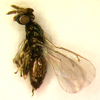 |
|||||||||||||||||||||||||||||||||||||||||||||||||||||||||||||||||||||||||||||||||||||||||||||||
|
|
Home | Open the Key | References | ||||||||||||||||||||||||||||||||||||||||||||||||||||||||||||||||||||||||||||||||||||||||||||
|
|||||||||||||||||||||||||||||||||||||||||||||||||||||||||||||||||||||||||||||||||||||||||||||||
Classification
|
|||||||||||||||||||||||||||||||||||||||||||||||||||||||||||||||||||||||||||||||||||||||||||||||
Subfamily Tribe |
|||||||||||||||||||||||||||||||||||||||||||||||||||||||||||||||||||||||||||||||||||||||||||||||
Diagnosis
|
|||||||||||||||||||||||||||||||||||||||||||||||||||||||||||||||||||||||||||||||||||||||||||||||
|
|
||||||||||||||||||||||||||||||||||||||||||||||||||||||||||||||||||||||||||||||||||||||||||||||
| |
|||||||||||||||||||||||||||||||||||||||||||||||||||||||||||||||||||||||||||||||||||||||||||||||
Distribution |
|||||||||||||||||||||||||||||||||||||||||||||||||||||||||||||||||||||||||||||||||||||||||||||||
|
Diglyphus is a moderate sized genus (less than 50 described species) recorded in Afrotropical, Nearctic, Neotropical, Oriental and Palearctic regions (Noyes, 2001). |
|||||||||||||||||||||||||||||||||||||||||||||||||||||||||||||||||||||||||||||||||||||||||||||||
| |
|||||||||||||||||||||||||||||||||||||||||||||||||||||||||||||||||||||||||||||||||||||||||||||||
Biology |
|||||||||||||||||||||||||||||||||||||||||||||||||||||||||||||||||||||||||||||||||||||||||||||||
|
The species of this genus are parasitoids of agromyzid leafminers, although they are occasionally reared from other Diptera and Lepidoptera leafminers (Noyes, 2001). |
|||||||||||||||||||||||||||||||||||||||||||||||||||||||||||||||||||||||||||||||||||||||||||||||
| |
|||||||||||||||||||||||||||||||||||||||||||||||||||||||||||||||||||||||||||||||||||||||||||||||
| |
|||||||||||||||||||||||||||||||||||||||||||||||||||||||||||||||||||||||||||||||||||||||||||||||
Comments |
|||||||||||||||||||||||||||||||||||||||||||||||||||||||||||||||||||||||||||||||||||||||||||||||
|
Diglyphus belongs to the tribe Cirrospilini
having funicle 2-segmented in both sexes, propleura separated
posteriorly, submarginal vein with 3 or more setae dorsally and
2 pairs of scutellar setae.
Diglyphus can be distinguished from the other Cirrosplini included in the key as follows: Cirrospilus, Diaulinopsis and Semielacher have notauli complete and reaching posterior margin of mesoscutum; Cirrospilus “variegatus group” and Zagrammosoma have extensive yellow markings on the body and vaulted vertex; Diaulinopsis has postmarginal vein at least 1.50 times stigmal vein; Semielacher, Meruana and Danuviella have a distinct petiole; Meruana has also propodeal plicae which converge posteriorly. Finally, Cirrospilus ambiguus and Danuviella seem to be the closest taxa to Diglyphus: C. ambiguus has notauli curving to axilla as all Diglyphus have, but may be recognized by having yellow markings on head and on the gaster; Danuviella has a small but distinct petiole. Reviews or keys for Diglyphus are available for North America (Gordh & Hendrickson, 1979), Europe (Yefremova & Shrol, 1996b) and China (Zhu et al., 2000b). |
|||||||||||||||||||||||||||||||||||||||||||||||||||||||||||||||||||||||||||||||||||||||||||||||


